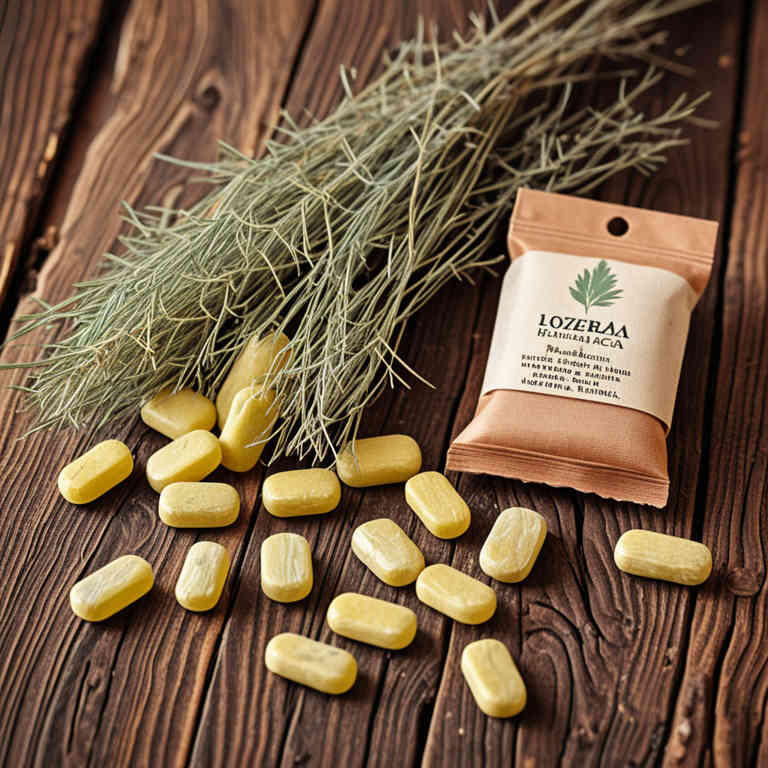Ephedra sinica lozenge for medicinal use

Ephedra sinica lozenge is a traditional herbal preparation made from the dried stems of the Ephedra sinica plant, commonly known as Ma Huang.
It is used in herbalism to treat respiratory conditions such as asthma, bronchitis, and nasal congestion due to its bronchodilatory and decongestant properties. The lozenges are often formulated to provide a soothing effect on the throat while delivering the active compounds. However, it is important to note that Ephedra sinica contains ephedrine, a stimulant that can have significant side effects and is regulated in many countries.
Due to these risks, its use is generally discouraged unless under strict medical supervision.
Uses
Ephedra sinica lozenge has been used to treat respiratory conditions such as asthma, bronchitis, and nasal congestion for centuries, particularly in traditional Chinese medicine.
Historically, it was valued for its ability to open the airways and reduce inflammation, making it a popular remedy for breathing difficulties. In modern times, it has been studied for its potential bronchodilator and decongestant effects, though its use is now heavily regulated due to safety concerns. Despite its traditional significance, the risks of side effects and potential for abuse have led to restrictions on its availability in many countries.
Nonetheless, it remains an important herb in the history of herbal medicine.
Benefits
Ephedra sinica lozenge has health benefits such as relieving symptoms of respiratory conditions like asthma and bronchitis by acting as a bronchodilator.
It can help reduce nasal congestion and ease breathing difficulties. The lozenges may also provide a soothing effect on the throat, making them useful for cough relief. However, it is important to note that Ephedra sinica contains ephedrine, which can have stimulant effects and may pose risks with long-term use or high doses.
Due to potential side effects and interactions, it should be used under the guidance of a healthcare professional.
Constituents
Ephedra sinica lozenge active constituents include ephedrine, pseudoephedrine, and methylephedrine, which are alkaloids known for their stimulant and bronchodilator properties.
These compounds work by stimulating the central nervous system and relaxing the smooth muscles in the airways, making them effective for relieving nasal congestion and respiratory symptoms. Ephedrine is particularly noted for its ability to increase heart rate and blood pressure, while pseudoephedrine is commonly used for its decongestant effects. Methylephedrine, though less commonly used, also contributes to the overall decongestant and bronchodilator action.
However, due to potential side effects and risks, the use of Ephedra sinica lozenges is often restricted or regulated in many countries.
Preparation
To make Ephedra sinica lozenge, first gather the dried Ephedra sinica plant material, ensuring it is free from contaminants.
Crush the dried herb into a fine powder using a mortar and pestle or a blender. Mix the powdered herb with a binding agent such as honey or glycerin, adjusting the ratio to achieve the desired consistency. Shape the mixture into small lozenges using a lozenge mold or by hand.
Allow the lozenges to dry completely in a cool, dry place before storing them in an airtight container.
Side Effects
Ephedra sinica lozenge may lead to serious health risks due to its active ingredient, ephedrine, which can stimulate the central nervous system and increase heart rate.
Possible side effects include elevated blood pressure, insomnia, anxiety, and gastrointestinal discomfort. In higher doses, it may cause rapid heartbeat, seizures, or even stroke. Long-term use can lead to dependency and cardiovascular complications.
It is important to consult a healthcare professional before using this preparation, especially for individuals with pre-existing medical conditions.